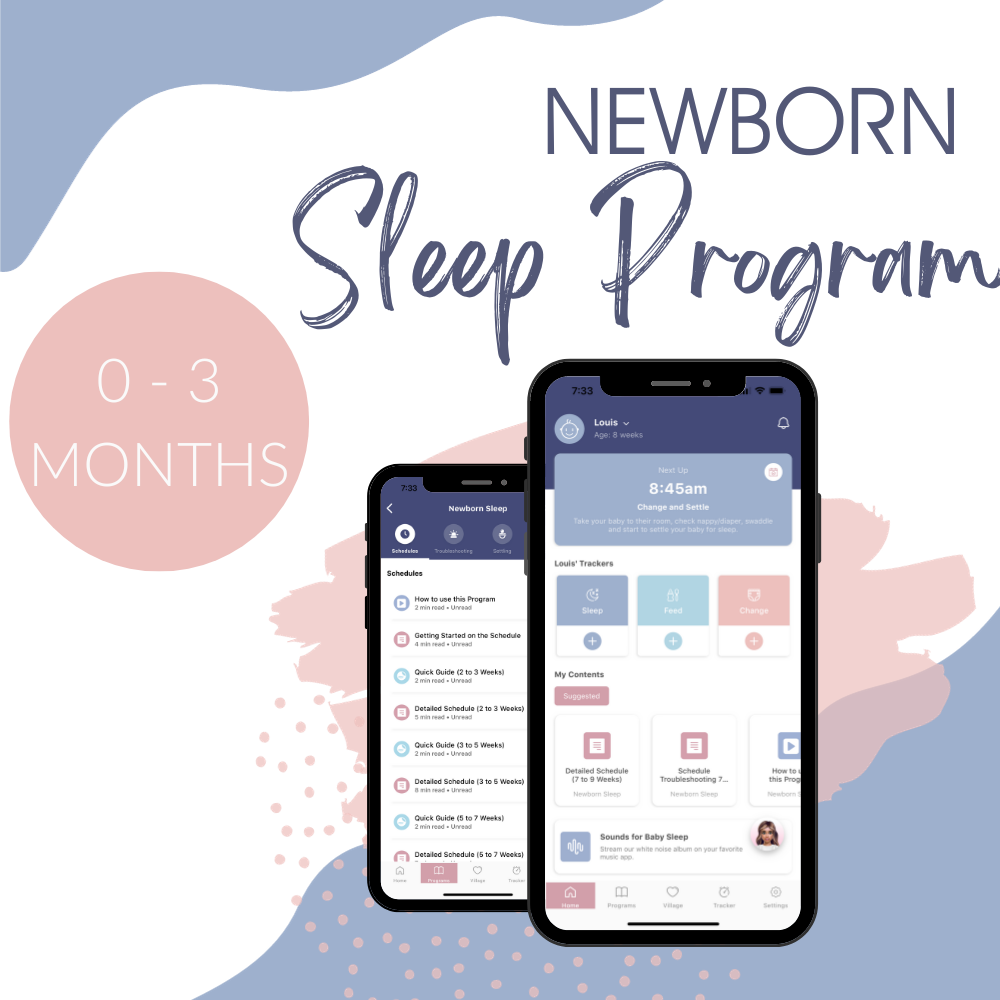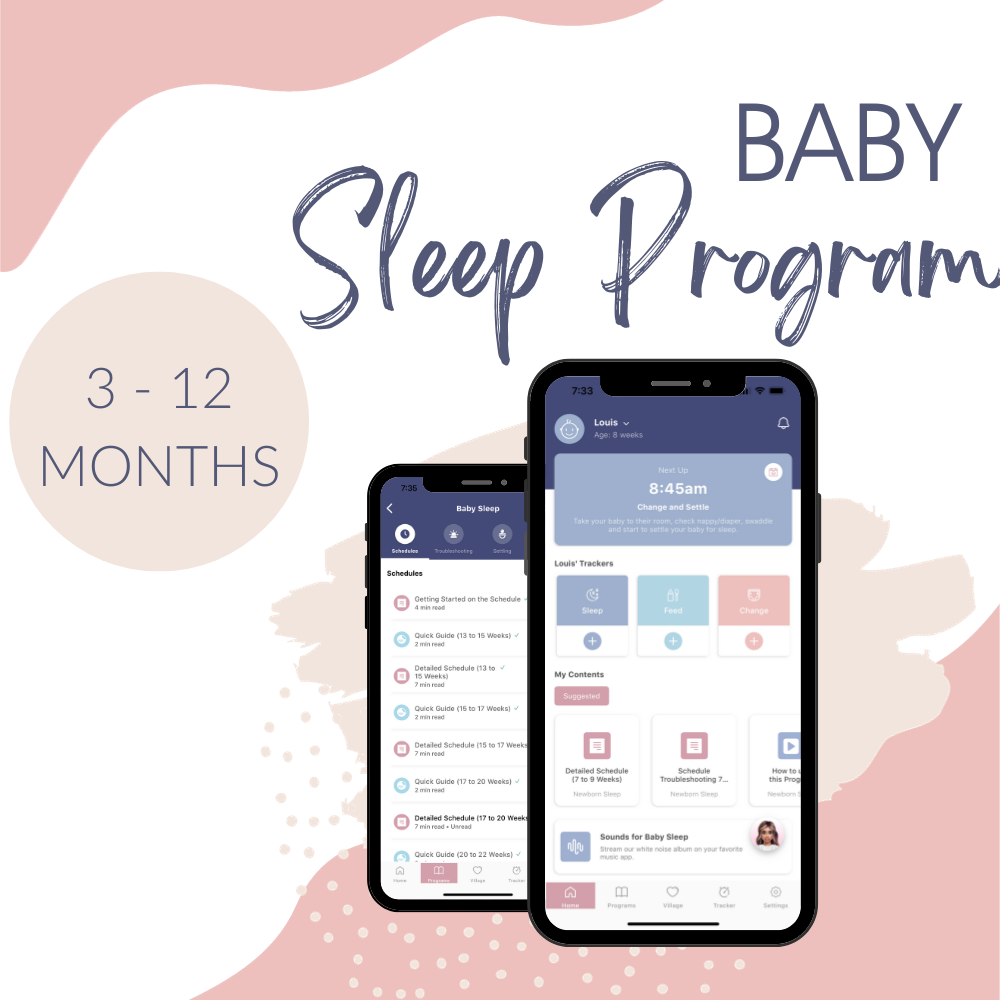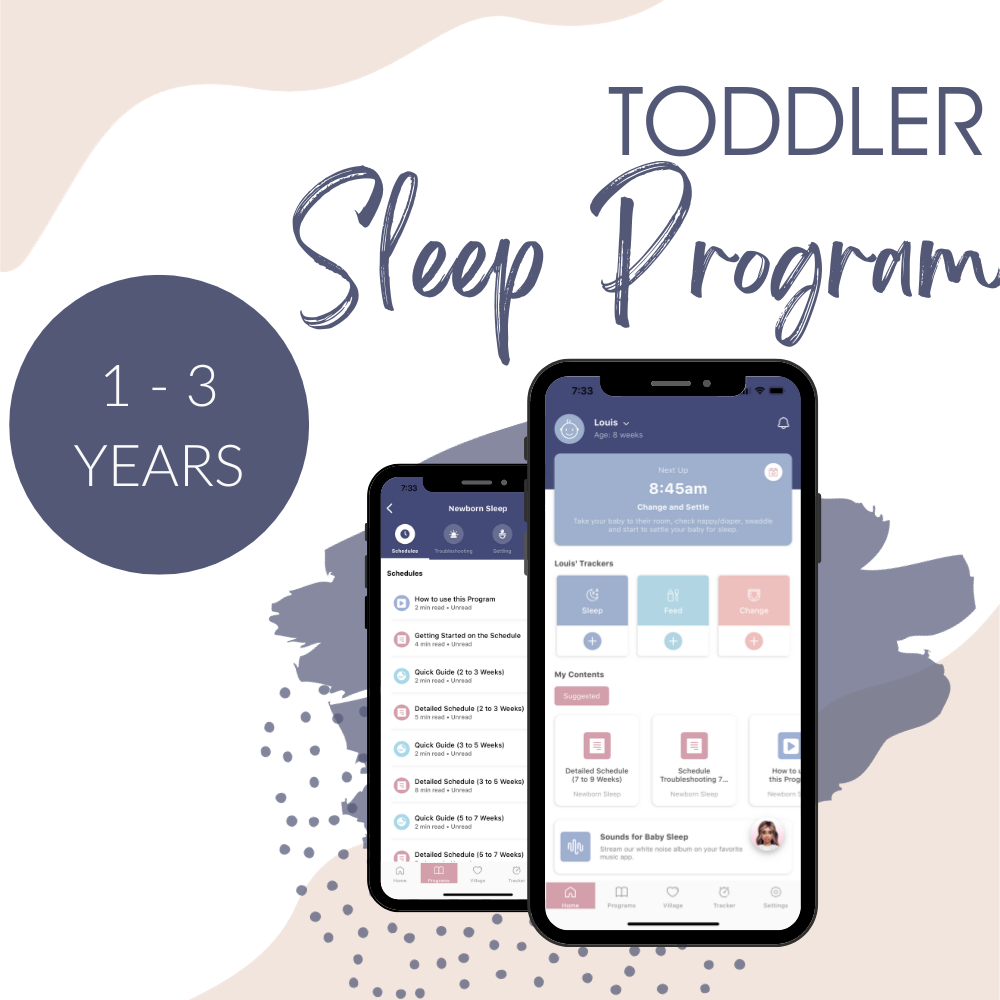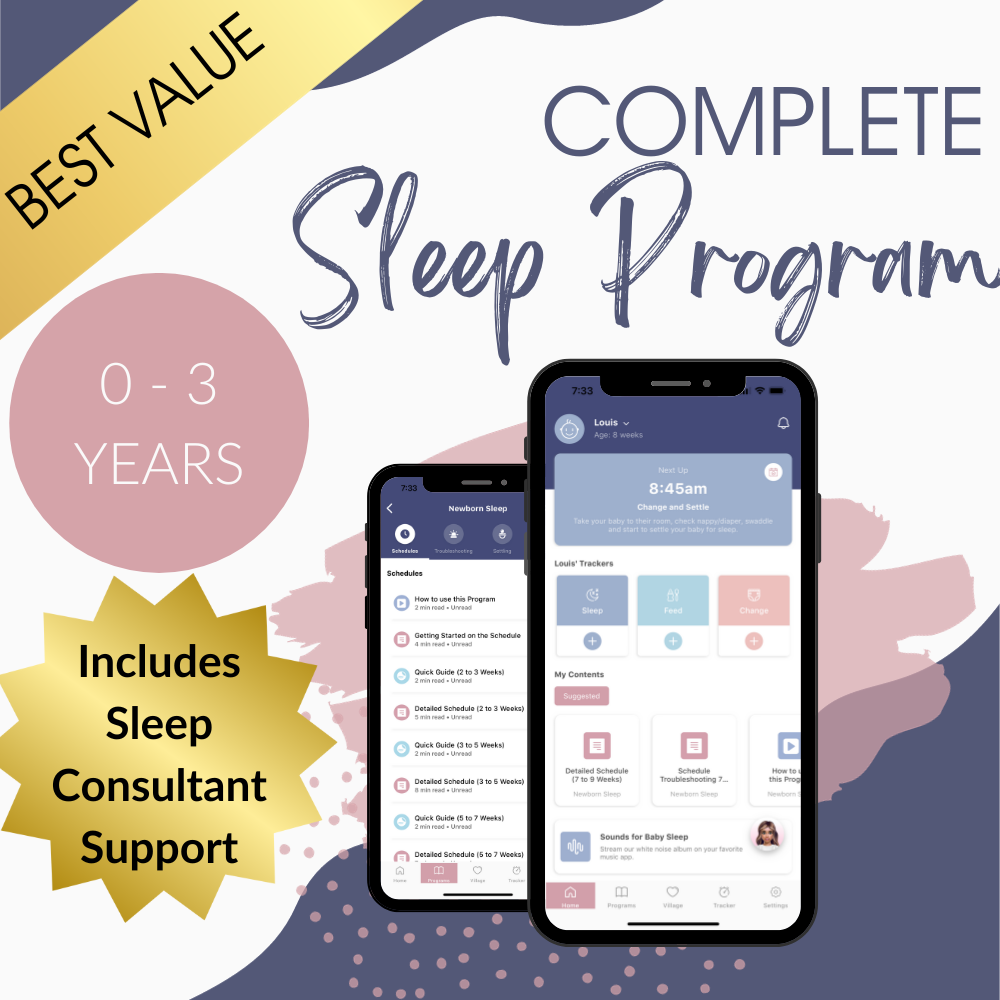
When to Stop Swaddling
Swaddling can be a great way to help younger babies settle easily and sleep for longer stretches at naps and overnight. The swaddle suppresses their startle (moro) reflex and recreates the cozy feeling of being in the womb. Sadly though, there will come a day when you need to say goodbye to the swaddle and this can cause some disruption to your little one’s settling and sleep.
In this article:
- When to stop swaddling
- How to stop swaddling: Gradual Method and Quick Method
You CAN have a better night’s sleep!
Whatever your current sleep situation, we've got the tools, the information and the personalised support to help you and your little one reclaim those nights.
Join Now
When to stop swaddling
Most babies don’t lose their moro reflex until closer to 5 months so we generally recommend keeping your baby swaddled until then (if you are able to), so that they won’t startle themselves awake once the swaddle is removed.
Once your baby starts to roll though, it is no longer safe to keep them swaddled, as they will need their arms free to be able to lift and manouever their head and shoulders. If your baby is still quite young when they start rolling, you might want to consider a transitional swaddle that is safe for rolling such as the Sleepy Hugs or Zipadee-Zip.
If your baby is still swaddled and starts to show signs of rolling, such as rolling up onto their side or rolling from belly to back - don’t panic! You don’t have to rush the swaddle away immediately as it may be some time yet before they actually succeed in rolling over onto their belly, especially while they are in bed. Instead, continue to monitor them closely and if you feel they are ready, start gradually removing the swaddle.
If your baby gets to 6 months and is still not showing any signs of rolling, it’s worth discussing with your doctor, but since their startle reflex should have disappeared by now, we would recommend going ahead and removing the swaddle.
How to stop swaddling
Removing the swaddle can be a tricky period for your little one, as they will have come to associate the swaddle with sleep and sleeping with their hands free will feel very new for them.
Having your baby in a predictable nap pattern for their day will make this transition a lot easier, as you can guarantee they'll be perfectly ready for their naps, which will mean a lot less overtired or undertired fussing once the swaddle is gone.
Firstly, we would recommend setting up some positive sleep associations and ensuring their sleep environment is spot-on before attempting to ditch the swaddle. Our recommendations are:
- Introduce white noise and play it as loud as a shower for all naps and overnight. You can find our white noise album here.
- Make the room nice and dark with no stimulating toys or nightlights. This promotes the release of the sleep hormone, melatonin, which helps our little ones to fall asleep and stay asleep.
- Give your baby an age-appropriate lovey or comforter they can hold once free of the swaddle.
- Replace the swaddle with a baby sleeping bag (if you don't already have a swaddle that transitions to arms-out)
- Encourage your baby to fall asleep independently, or self-settle, without active settling from you - this is often much easier to achieve while they're still swaddled!
From there, we have two methods to transition out of the swaddle...
Gradual Method
During this transition, keep everything else the same in your baby’s sleep environment: dark room, white noise etc. If you feel it is appropriate, you can add a cuddly for them to hold to help control their newfound freedom with their arms.
This method works by doing the unswaddling bit by bit, nap by nap.
Day 1
Remove one arm out of the swaddle at the morning nap first, as this is the easiest for your baby to go to sleep. Give them the chance to settle themselves to sleep, but if they are struggling, it's okay to actively settling them all the way to sleep while they get used to not having the swaddle (this might mean patting or side settling to sleep). For the rest of their naps and overnight, keep both arms in the swaddle for now.
Day 2-3
Overnight – once your baby is used to having their arm out for the morning nap, take one arm out of the swaddle for their overnight sleep. Keep both arms in for their other daytime naps for now.
Day 4-5
Lunchtime nap - once your baby is used to having their arm out for the morning nap and overnight, take one arm out of the swaddle for their lunchtime nap. They may wake after one sleep cycle, in which case you can go and resettle them back to sleep. Keep both arms in for their late afternoon nap for now; as this is often the hardest nap to achieve. If your baby is resisting the afternoon nap, you can try doing this nap in the car, stroller or front pack during this transition.
Day 6-7 & Beyond
Once your baby is doing all naps (except the late afternoon nap) with one arm out, take the other arm out, starting with the morning nap, in the same way you did the first arm. Begin with 2 arms out for the morning nap only, then overnight, then lastly the lunchtime nap. They may wake after one sleep cycle for their naps in which case you can go and resettle them back to sleep. Once both arms are out, you can also implement this for the late afternoon nap, or continue to do the afternoon nap in the car, stroller or front pack if you prefer.
It is very normal for your baby to be a bit unsettled during this transition – they just have a new “normal” to adapt to that is very different from what they’ve known. It will get better!
Quick Method
With this method, you go cold turkey on the swaddle for all naps from day 1. You can actively settle your baby to sleep if they’re not settling well, being mindful to reduce the settling after a couple of days so as not to create a new sleep association.
Say goodbye to sleepless nights.
Join over 300,000 families worldwide who are enjoying excellent sleep with our Sleep Programs, created by experts in the field of pediatric sleep.
Buy Now
Day 1 might be a bit tricky, but day 2 and 3 will be much easier! Since the late afternoon nap is usually a hard nap to get your baby to sleep, we recommend doing this nap in the car or a stroller or front pack during the removal of the swaddle.
Once unswaddled, your baby may wake after one sleep cycle at the lunch nap and/or after bedtime. You can just resettle them back to sleep if that happens. Do the same with any overnight wakes (allowing for feeds if your baby normally has them). Try not to panic! These wakes are usually only temporary while your baby is adjusting to having their arms out.
By day 3 your baby should be getting used to having no swaddle, so start to give them the chance to settle themselves to sleep if they were previously self-settling.
Any change for your baby is going to be hard and it will take some time for them to adjust, un-swaddling is no exception. What will make this transition much easier is having your baby in a good nap routine so they already have clear sleep associations and expectations.
If you need a hand getting better naps happening with your little one, or troubleshooting tricky patches like losing the swaddle, our Little Ones App has all the answers! When you subscribe, you'll also get instant access to our Little Ones Village, where our certified sleep consultants are available, day and night, to provide more personalised guidance and support.
-------------
Bibliography
Nelson, A. M. (2017). Risks and Benefits of Swaddling Healthy Infants. MCN: The American Journal of Maternal/Child Nursing, 42(4), 216–225. https://doi.org/10.1097/nmc.0000000000000344





